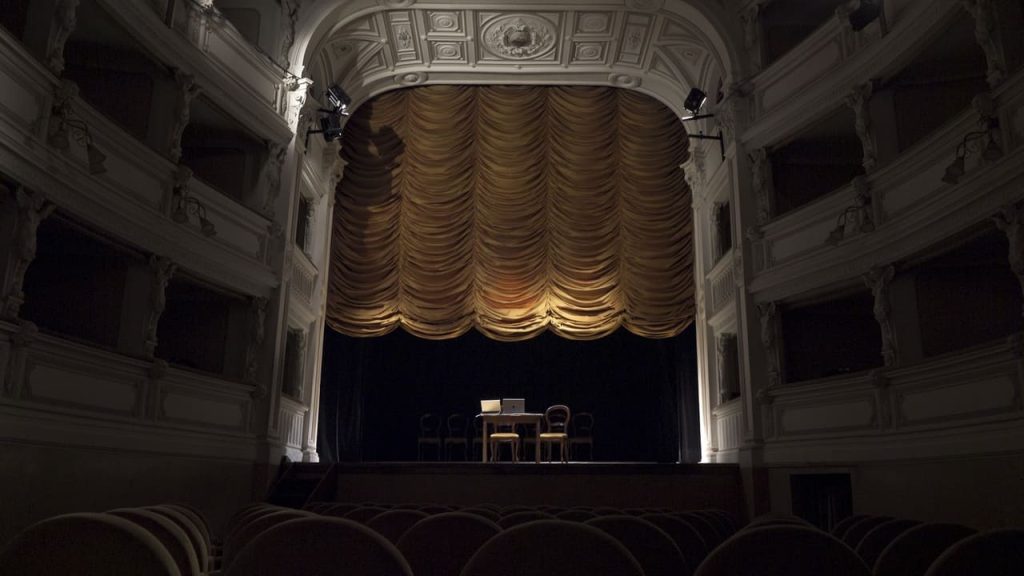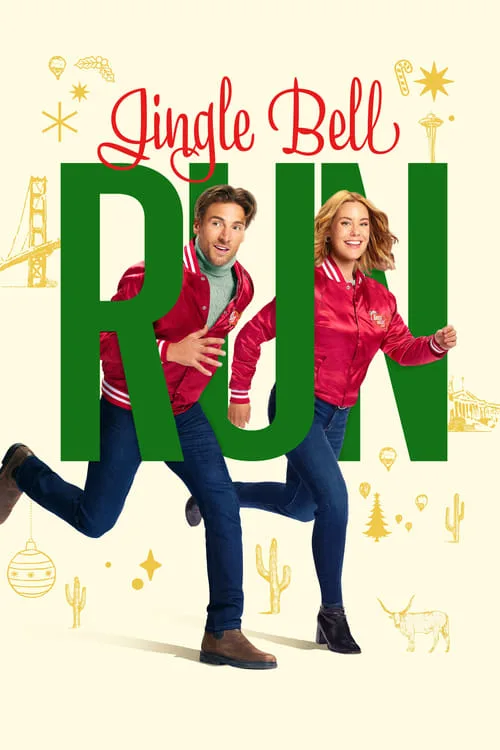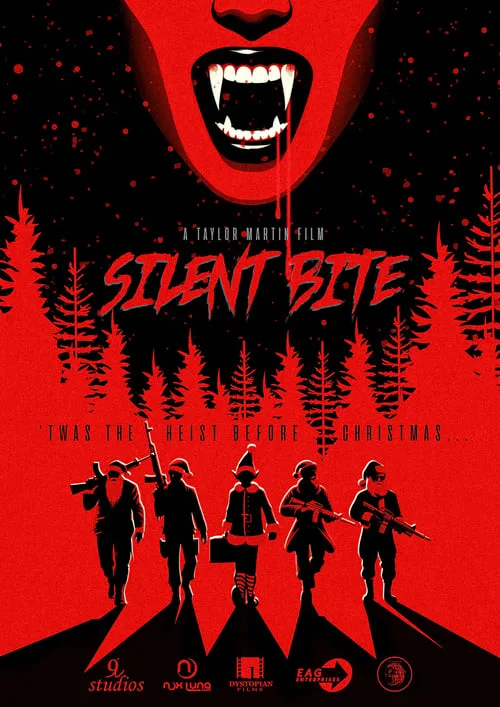A Provocative Behind-the-Scenes Exploration by Jeremy O. Harris
“Slave Play. Not A Movie. A Play” (2024) is an experimental documentary directed by Jeremy O. Harris. The film is an avant-garde exploration of Harris’s creative process, focusing on the rehearsals and performances of his provocative stage play, “Slave Play.” The play, which has garnered significant attention and controversy, delves into racial stereotypes and power dynamics through the lens of interracial couples engaging in role-playing on an imaginary plantation. The documentary has received mixed reviews, with praise for its thought-provoking content and criticism for its execution and narrative structure.

Within the first few minutes, Harris bombards the audience with a barrage of reviews from critics and influencers. Using snippets of news coverage, TikTok reels, and anonymous criticisms, Harris and his editors, Peter Ohs and Teki Cruickshank, underscore the play’s reputation before the film even begins in earnest. This approach seems to invite the audience into the conversation, asking, “This is what the world is saying; what do you think?” This method positions “Slave Play. Not A Movie. A Play” is a subjective experience, much like the art it examines.
Drawing inspiration from Orson Welles’ 1973 film “F is for Fake,” Harris doesn’t connect scenes; he connects thoughts. He intercuts footage from various rehearsals with different actors and theatrical productions, often showing similar scenes side by side. This technique allows the audience to see how different actors approach the same scene, noting variations in line delivery, physical tics, and interactions with co-stars. It feels as though we are watching the play being written and dissected repeatedly, providing a unique viewing experience.
This method gives the impression that we’re inside Harris’s mind as he watches and re-watches the film in the editing process. Harris articulates this sentiment as we observe him and Peter Ohs editing the film within the film. He comments on how cinema differs from theater because of the multitude of choices, scenes, and performances. Despite its serious racial undertones, “Slave Play. Not A Movie. A Play.” maintains the same unserious tone as the theatrical production. Harris captivates the audience with humor and style, both metaphorically and literally, as he stands out with his wardrobe compared to his supporting cast. Without explicit exposition, it becomes clear that Harris is the main character. We observe his mannerisms, speech, and, more importantly, his thought process.
Harris’ perspective within the film and play serves as a metaphor for his navigation of the world as a black person, or BIPOC. Much like the audience is uncertain about the type of story they’ll experience, Harris never knows which America he’ll encounter when he steps through the door. This aspect, while the film’s greatest strength, is also its biggest weakness. The narrative of this experimental documentary feels incomplete, which is understandable since Harris’s own story continues to evolve.
Despite the film’s strong opening and compelling edits, the ending leaves much to be desired. Harris showcases his clear talent throughout the motion picture, making it disappointing when the film becomes unfocused in parts. It seems to take too much pleasure in existing as a conversation starter rather than living up to its namesake. Its reliance on the novelty and shock value of slavery role-play causes it to end on a less impactful note.
Positive Aspects
- Avant-Garde Storytelling:
- Atmospheric Tension and Visuals:
- Compelling Performances:
- Thought-Provoking Themes:
- The film’s premise, involving mythical creatures observing humans, is intriguing. Thematically, it explores ideas of duplication and voyeurism, adding depth to the horror narrative 7 8.
- Effective Use of Music and Sound Design:
Mixed to Negative Aspects
- Weak Script and Character Development:
- Convoluted and Predictable Plot:
- Inconsistent Execution and Pacing:
- Overexposure of Creatures:
- Mixed Critical Reception:
- The film debuted with a disappointing 31% score on Rotten Tomatoes, indicating mixed to negative reviews. Critics have praised the atmosphere but criticized the script and overall execution, leading to a polarized reception 19 20.
“Slave Play. Not A Movie. A Play” (2024) is an experimental documentary that excels in creating an eerie and tense atmosphere, with strong performances from Dakota Fanning and Olwen Fouéré. Directed by Jeremy O. Harris, the film offers an intriguing premise and effective use of music and sound design. However, it falls short due to a weak script, convoluted plot, and inconsistent execution. Despite its flaws, the film’s atmospheric tension and compelling creature design make it a noteworthy entry in the horror genre.
For fans of experimental documentaries and those interested in avant-garde storytelling, “Slave Play. Not A Movie. A Play” offers a mixed but intriguing experience, best appreciated for its visual and auditory elements.
FAQ
Q: Who is Jeremy O. Harris?
Jeremy O. Harris is a playwright and filmmaker best known for his provocative works that explore complex themes of race, sexuality, and power dynamics. His most notable work, “Slave Play,” received 12 Tony Award nominations, making it one of the most talked-about plays in recent Broadway history. Harris’s approach to storytelling is often avant-garde, pushing the boundaries of traditional theater and film.
Q: What is “slave play? Not A Movie. A Play.” about?
A: “Slave Play. Not A Movie. A Play.” is a behind-the-scenes look at the controversial stage play “Slave Play.” The film explores the creative process of playwright Jeremy O. Harris, focusing on the rehearsals and various productions of the play. It intercuts footage from rehearsals with different actors, showing how they approach the same scenes, and delves into the themes of the play, including racial stereotypes and power dynamics. The film is more of an experimental documentary, highlighting Harris’s creative process rather than following a traditional narrative structure.
Q: What themes does “Slave Play. Not a Movie, A Play.” explore?
A: The film explores themes of race, power dynamics, and the creative process behind a controversial work of art. It delves into the complexities of interracial relationships and the historical context of slavery, all within the framework of a kinky therapy session set on an imaginary plantation. The film also addresses how art can provoke and challenge societal norms, inviting the audience to engage in the conversation.
Q: How does the film compare to the stage play?
While the stage play “Slave Play” is a direct exploration of its themes through the narrative of three interracial couples, the film “Slave Play. Not A Movie. A Play.” takes a more avant-garde approach. The film focuses on the creative process, showing rehearsals, different actors’ interpretations, and the director’s thoughts. It provides a behind-the-scenes look at the making of the play, rather than a straightforward adaptation. This approach allows the audience to see the evolution of the play and the various creative decisions involved.
Q: What makes Jeremy O. Harris’s approach unique?
Jeremy O. Harris’s approach is unique due to his avant-garde style and willingness to push boundaries. He often blurs the lines between different forms of media, as seen in “Slave Play, Not a Movie, A Play.,” where he combines elements of documentary filmmaking with experimental storytelling. Harris’s work is known for its provocative themes and ability to spark meaningful conversations, challenging audiences to think critically about complex social issues.
Q: How has “Slave Play, Not a Movie, A Play.” been received by critics?
A: The film has received mixed reviews from critics. While some praise its avant-garde approach and thought-provoking content, others criticize it for being unfocused and relying too much on shock value. The film’s strong opening and compelling edits have been noted, but its ending has left some viewers wanting more. Overall, the film is recognized for its ability to engage audiences and provoke discussion, even if it doesn’t fully deliver on all its ambitious themes.
Q: What can audiences expect from “Slave Play. Not A Movie. A Play.”?
A: Audiences can expect an engaging and thought-provoking experience that offers a unique look at the creative process behind “Slave Play.” The film’s avant-garde approach, including its intercutting of rehearsal footage and different actors’ interpretations, provides a fresh perspective on the themes of race, power dynamics, and artistic expression. While the film may not follow a traditional narrative structure, it captivates viewers with its innovative storytelling and ability to spark meaningful conversations.
Sources and Reviews



